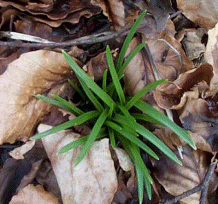|
Imbolc
Imbolc falls on
or around 2nd February. It is known by many names including
Imbolg, Oimelc (meaning "ewe's milk"), Brigit's Day and, by the
catholic church, Candlemas.
Brigit (also spelt Bridget, Brigid, Brighid and Bride) was a
Celtic Goddess who presided over the hearth and the forge. She
is closely associated with livestock and domesticated animals -
in particular, with sheep who begin their lambing at this time
of year.
To the Celts, Oimelc was a "feast of milk" and the fire festival
is a celebration of light and the reawakening of the Earth after
the sleep of the Winter. It is a time when animals begin to give
birth to their young and the first shoots appear from beneath
the soil. |
 |